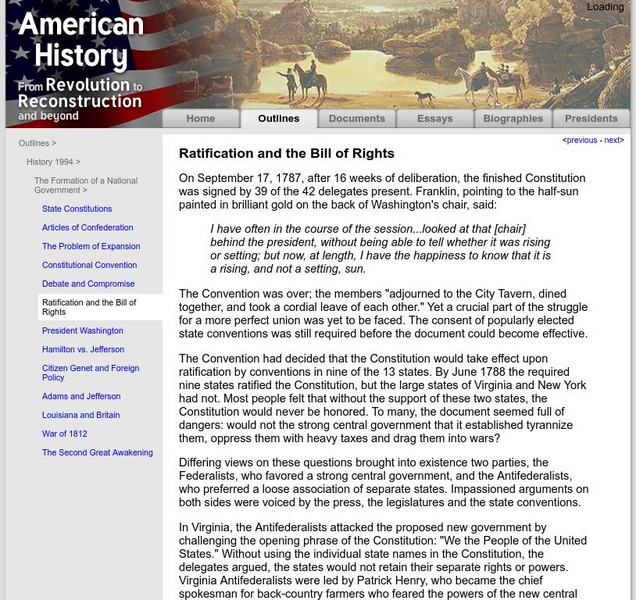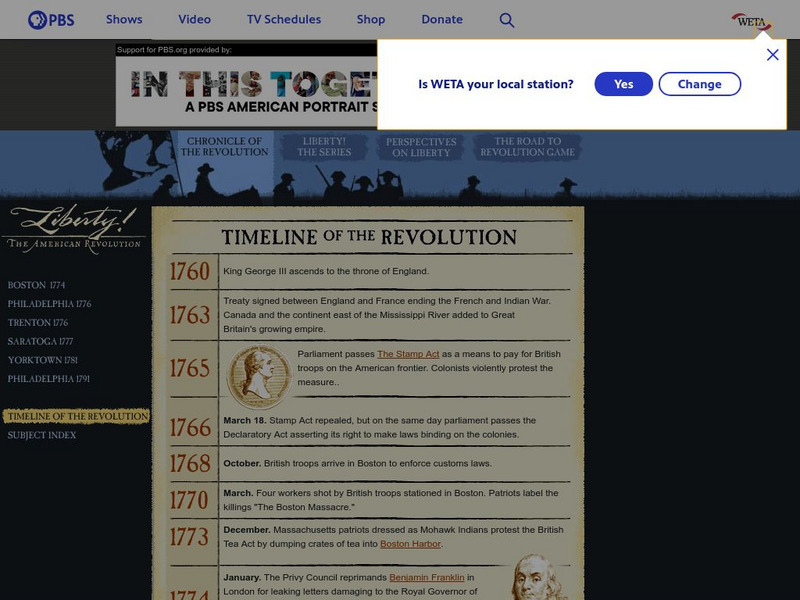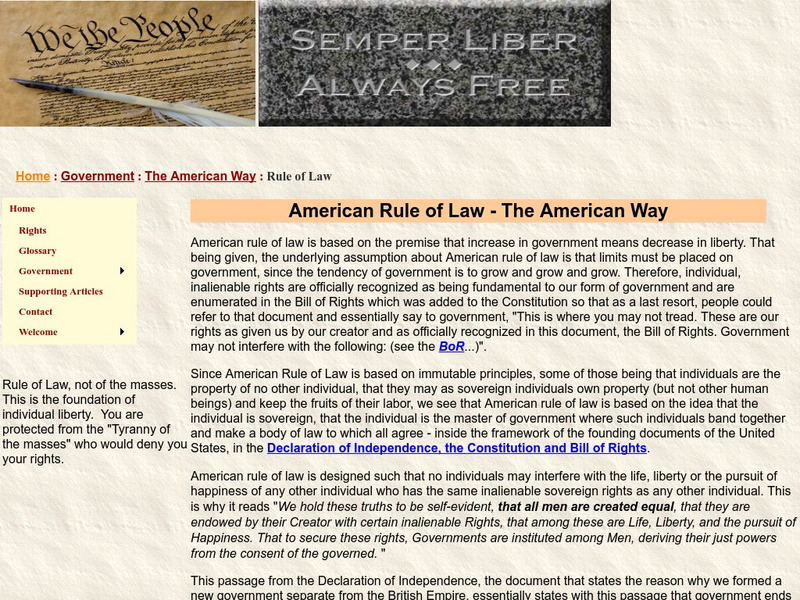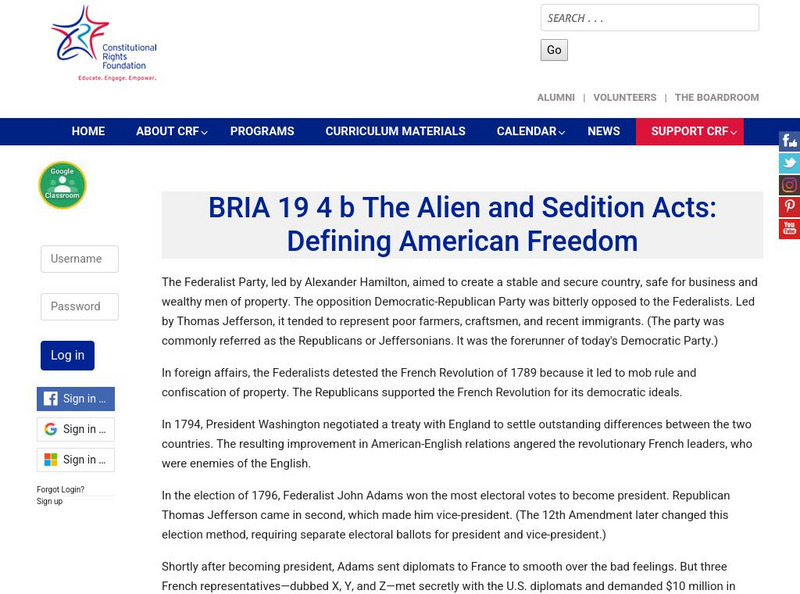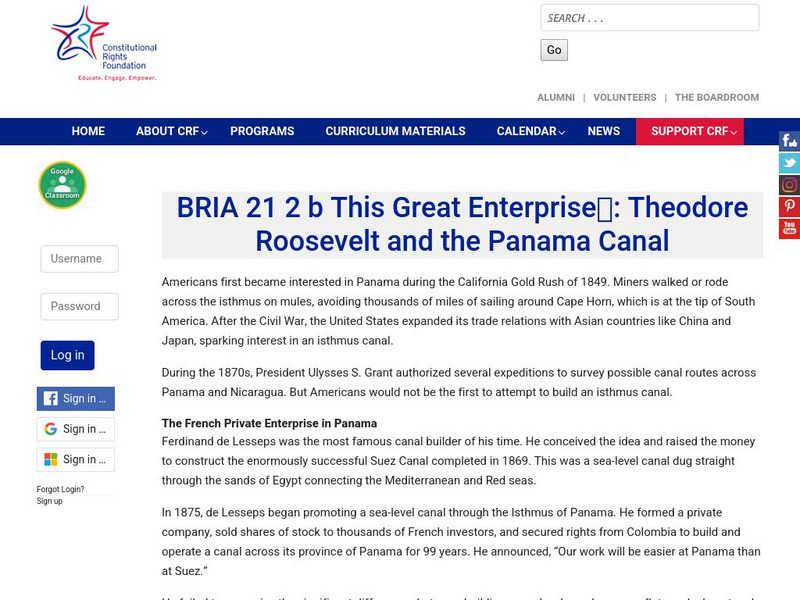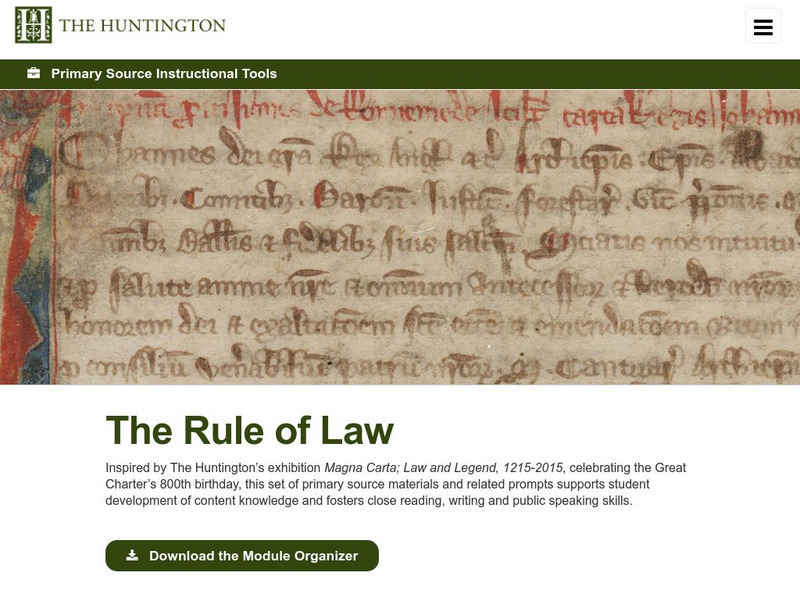Bill of Rights Institute
Bill of Rights Institute: Alexander Hamilton
Alexander Hamilton is perhaps the most misunderstood and under-appreciated of the Founders. A proponent of a strong national government with an "energetic executive," he is sometimes described as the godfather of modern big government....
Bill of Rights Institute
Bill of Rights Institute: John Jay
John Jay epitomized the selfless leader of the American Revolution. Born to a prominent New York family, John Jay gained notoriety as a lawyer in his home state. He favored a moderate approach to Britain but joined his fellow Patriots...
Teaching American History
Teaching American History: The Federalist/antifederalist Debate Bill of Rights
Identify the role of the debates between the Federalists and Antifederalists during the creation of the ten amendments to the U.S. Constitution.
University of Groningen
American History: Outlines: Ratification and Bill of Rights
This site is provided for by the University of Groningen. Learn about the struggle for approval by the states of the U.S. Constitution, continuous disagreements after the Constitutional Convention between the Federalists and the...
PBS
Pbs: Timeline of the Revolution
A timeline beginning at the ascension of King George of England in 1760 and ending at the passing of the US Bill of Rights, is brief but informative. A Revolutionary War game, as well as other educational sites are available.
Other
Semper Liber: American Rule of Law the American Way
American rule of law is based on the premise that increase in government means decrease in liberty. That being given, the underlying assumption about American rule of law is that limits must be placed on government, since the tendency of...
PBS
Pbs Newshour: The Gi Bill's Legacy
Jim Lehrer, on his NewsHour program, offers an extensive interview with several historians discussing the impact of the GI Bill in transforming American society. Read what Stephen Ambrose, Doris Kerns Goodwin, Haynes Johnson, and Michael...
US Government Publishing Office
U.s. Government Publishing Office: Our American Government, 2000 Edition
A popular introductory guide for American citizens and those of other countries who seek a greater understanding of our heritage of democracy. The question-and-answer format covers a broad range of topics dealing with the legislative,...
Other
Kingwood Library: American Cultural History: 1940 1949
Take a walk through this part of American history surrounding World War II. Each section includes cultural history of the time, with links pertaining to art and architecture, books and literature, education, fads and fashion, historic...
Constitutional Rights Foundation
Constitutional Rights Foundation: John Stuart Mill and Individual Liberty
Lesson for high school students on the philosophy of John Stuart Mill. Through reading, writing, and small group activity, students explore Mill's ideas on democracy, women's rights, and what constitutes a just government, then apply...
Constitutional Rights Foundation
Constitutional Rights Foundation: The Alien and Sedition Acts: Defining American Freedom
Lesson with activity in which students study and analyze the challenges surrounding constitutional rights and national security by focussing on the Alien and Sedition Act, 1798 and definitions of American freedom. Links to primary...
Constitutional Rights Foundation
Constitutional Rights Foundation: John Dewey and the Reconstruction of American Democracy
Article and activity on the ideas and philosophy of John Dewey in which students critique Dewey's methods and evaluate the relevancy of his ideas for American democracy today.
Constitutional Rights Foundation
Constitutional Rights Foundation: The Whiskey Rebellion and the New American Republic
Article and activity on the Whiskey Rebellion in which students read about this historic event for class discussion and identify larger themes of justice in early American government. Individual and small group participation.
Constitutional Rights Foundation
Constitutional Rights Foundation: Mendez v. Westminster: Paving the Way to School Desegregation
Article and activity on early school desegregation case brought by the Mexican-American community of California. Students explore background information and evaluate the impact Mendez v. Westminster had on school desegregation, and then...
Constitutional Rights Foundation
Constitutional Rights Foundation: Indian Removal: The Cherokees, Jackson, and the "Trail of Tears"
Collaborative and consensus building activity on U.S. policy and treatment of Native Americans. Lesson provides an in-depth look at government Indian removal and provides a list from which students choose and defend a Native American...
Constitutional Rights Foundation
Constitutional Rights Foundation: This Great Enterprise: Theodore Roosevelt and the Panama Canal
Lesson and activity on American enterprise and intervention with a focus on Theodore Roosevelt and the Pananma Canal. Includes class activity and questions for discussion and writing.
Constitutional Rights Foundation
Constitutional Rights Foundation: Religious Rights in Conflict
What happens when rights conflict? Explore sample conflicts: Free press vs. fair trial, religious rights in conflict, and Singapore: model society or city of fear? Great learning activities and lesson plans for teachers and students.
Curated OER
History Matters: A Bill of Rights for the Indians
In an attempt to redress wrongs towards Native Americans in the Dawes Act of 1887, John Collier, Roosevelt's Commissioner of Indian Affairs, collaborated with Native American elders in order to come up with new laws. Read about what was...
Huntington Library
Huntington Library: A Nation Conceived in Liberty [Pdf]
In this instructional activity, 11th graders examine the events and political philosophy that laid the foundations of the American government, the Constitution, and the Bill of Rights. They also look at what role religion played in...
US Government Publishing Office
Ben's Guide to u.s. Government: Ben's Ab Cs
Each letter of this alphabet is linked to an important aspect of the U.S. Government, e.g. "A is for Armed Forces" has a link to the Air Force. Links are made to the Bill of Rights, symbols, branches of government and The Constitution....
Huntington Library
Huntington Library: The Rule of Law
In this lesson, students examine primary source materials including the Book of Laws, the Constitution, the Bill of Rights, and the Magna Carta in order to understand their meaning and to compare them. They then prepare an argument on...
US National Archives
Nara: Charters of Freedom: Constitution of the United States
Comprehensive overview of the U.S. Constitution. Places the Constitution in context with two other founding charters of American democracy and government, the Declaration of Independence and the Bill of Rights. Includes access to digital...
iCivics
I Civics: Colonial Influences
Where did the American colonists get their ideas that lead to a revolution and a whole new kind of government? This lesson explores the Magna Carta, Mayflower Compact, English Bill of Rights, Cato's Letters, and Common Sense.
Digital History
Digital History: The Emergence of New Ideas About Personal Liberties
American colonists expected to have "English rights" as supported by the Magna Carta and the English Bill of Rights. See how these rights were applied in the trial of John Peter Zenger, whose acquittal reflected the right of freedom of...





